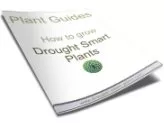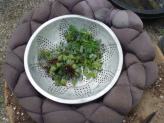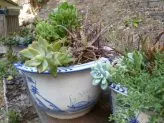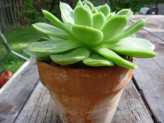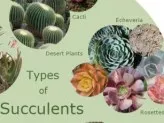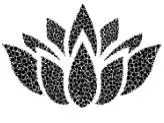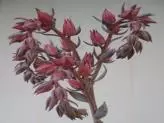Smooth, Warty, Fuzzy, Glossy, Textural
Drought Loving Tender Succulents
Echeveria are some of my favorite tender succulent plants. I grow them because they are so varied in their colours and textures.

I’ve been collecting these fascinating plants, as well as many other tender succulent plants, for several years, and I’m always pleasantly surprised to find yet another new Echeveria to add to my collection.
A common problem is the lack of consistency with Echeveria identification, and frequent confusion about the naming of Echeveria.

Echeveria glauca is well known, and rightfully so – the soft greeny blue perfectly shaped foliage looks just like a rose opening…
These are only a few of the many different kinds that are found growing in warmer climates such as California as ground cover plants, or as houseplants in a sunny bright window in cooler climates.
Out of the many different types of succulents, most Echeveria fit into the rosette forming category – but they can surprise you; many of them grow into a shrub form with many stems, rather than a solitary rosette. Several notable species grow as an extensive carpet or colony of many smaller rosettes all clustered together.
They are surprisingly easy to grow, and if they get too tall, they can be rejuvenated by a process called beheading – don’t worry, it’s not as difficult as it sounds; find out all about how to do it in my e-book:
The basic care for all succulents is that they need to be allowed to dry out – Echeveria in particular.
The soil has to drain quickly so the roots can dry out – if they are kept too wet, they can get what’s referred to as ‘soil sickness’ which is a catch all term that indicates the roots are damaged due to an excess of salt from fertilizing too often, or not flushing it through with water, or there isn’t enough air exchange through the sides of the pot.
This is why I continually harp on about using terracotta clay pots or hypertufa, both of which are porous and allow the moisture out, and air in.
Echeveria are also unique in that they prefer a slightly acid soil, rather than alkaline like other succulents. This means don’t add lime to your soil mix!
What does Echeveria mean? Here’s a funny anagram to help with that;


